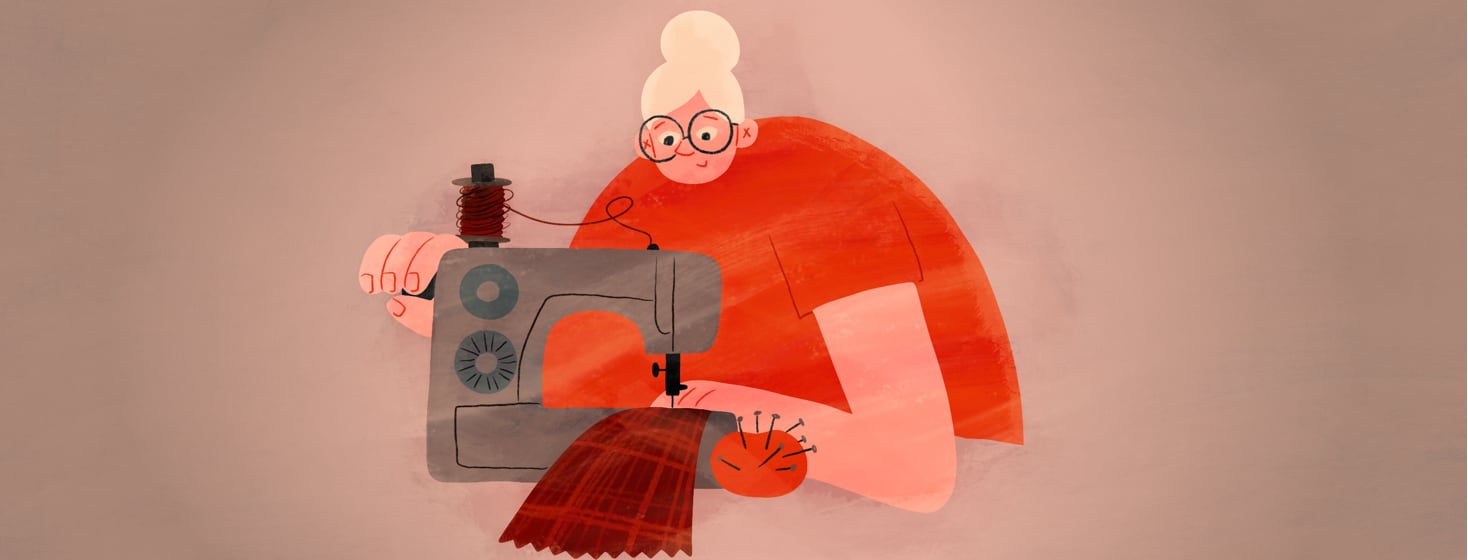Sewing is One of My Coping Skills
I don’t have to tell you that living with chronic hives can be difficult. If you are reading this article, I assume that either you or someone you love is dealing with this horrible condition. Living with a chronic condition, or multiple chronic conditions, can take its toll, both physically, mentally, and emotionally. My diagnosis of chronic hives is fairly new, but I’m definitely not new to the chronic illness game. Over the years I have developed some different coping mechanisms to help me deal with my illness, so I thought I’d share one of them here.
Coping mechanisms
I’ve mentioned before that my type of hives are caused by an autoimmune condition called Chronic Spontaneous Urticaria, CSU. While hives are a defining characteristic of most people with CSU, I am primarily afflicted with swelling, called angioedema. My angioedema mostly affects my mouth and face, and can be very uncomfortable, painful, and distracting.
One of my biggest coping mechanisms to deal with these symptoms is to engage in a physical activity that engages my creative brain and gives my hands something to do. I love anything crafty, but have recently gotten lost in sewing. I learned how to sew many many moons ago when I was in middle school. It is a skill that I have honed over the years. I’ve made everything from bags to clothes to quilts and everything in between. Sewing can be very meditative, depending on the type of work you are doing.
Taking the focus off my symptoms
I’ve made a few quilts throughout the years, but I got more serious about it when the pandemic began. I had some fabric sitting in the closet that had gone untouched for years, waiting to be made into something useful and beautiful. I’ve made many quilts since then, some big and some small. When I make quilts, I often so a pattern repeatedly, and I can get lost in the monotony of doing the same thing over and over. This often takes my focus off of any symptoms I am experiencing and I get lost in what I am doing.
I also enjoy picking out the fabric and coordinating colors as I make quilts. I have an embarrassingly large stash of fabric and I love going through it and picking out just the right combinations. I can spend hours comparing designs, color schemes, and patterns.
Distraction from discomfort and pain
Another type of sewing that I really enjoy is making clothing. I’ve spent the better part of this year creating a wardrobe that is comfortable and easy to wear when I am not feeling my best. Making my own clothes allows me to determine the type of fabric and fit of each garment. I love to work with knits because they are stretchy, easy to get in, and are typically very soft, which is easy on my skin.
When I make clothes, I generally make up my own patterns. It’s easy enough for me to pick a pattern out at the store, cut it out, and follow the directions, but I love the mental challenge of trying to bring my own image to life. Making a pattern is kind of like a puzzle, where the fabric has to be cut and sewn in just the right way. I admit, I sometimes get frustrated when I can’t make something look or fit the way I want it to, but that’s part of the challenge; it’s part of the brain game that I use to distract myself from uncomfortable or painful symptoms.
Sewing is just one of my coping mechanisms. I also love painting, making miniatures, and repurposing furniture. I also love to spend time outdoors, going for walks, and listening to the birds sing. My dog, who I’m training to be my service dog, also provides an outlet and comfort when I’m dealing with different symptoms.
What are your favorite coping skills and how do they help you manage your symptoms? Check out this forum:
Coping Skills for Managing Symptoms of Chronic Hives

Join the conversation